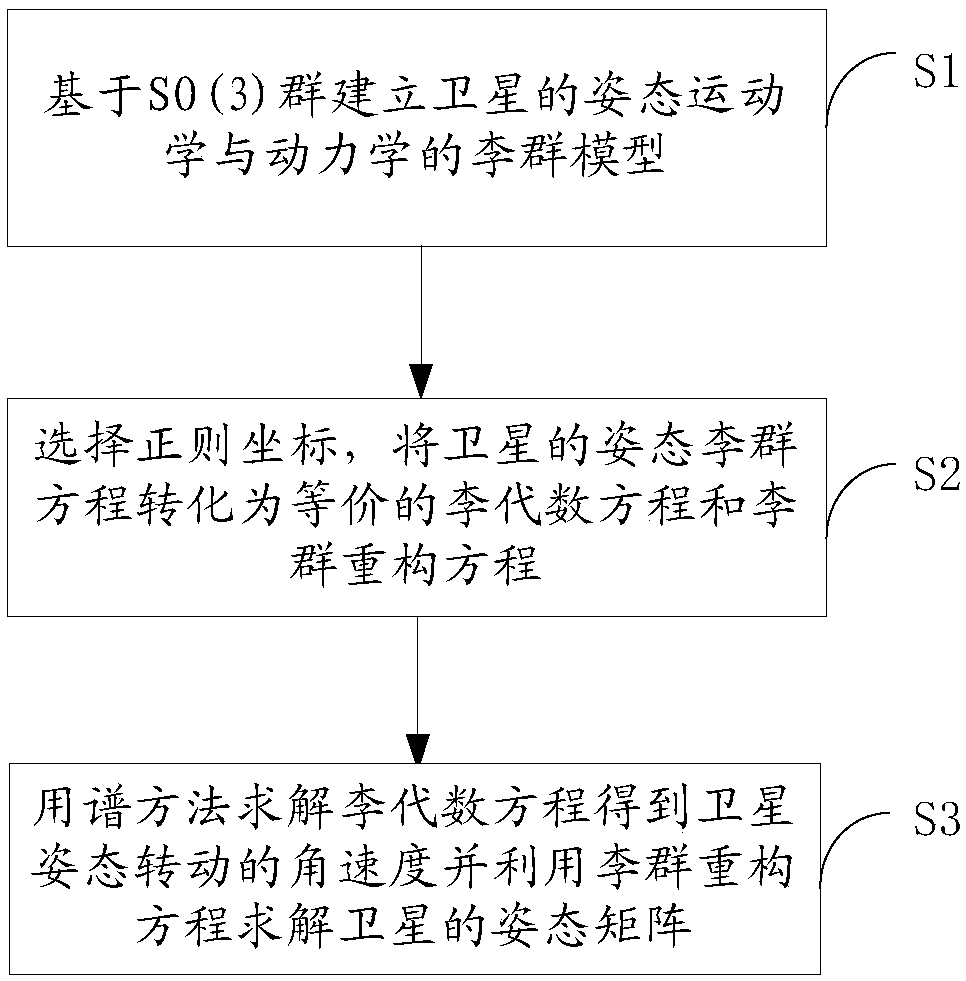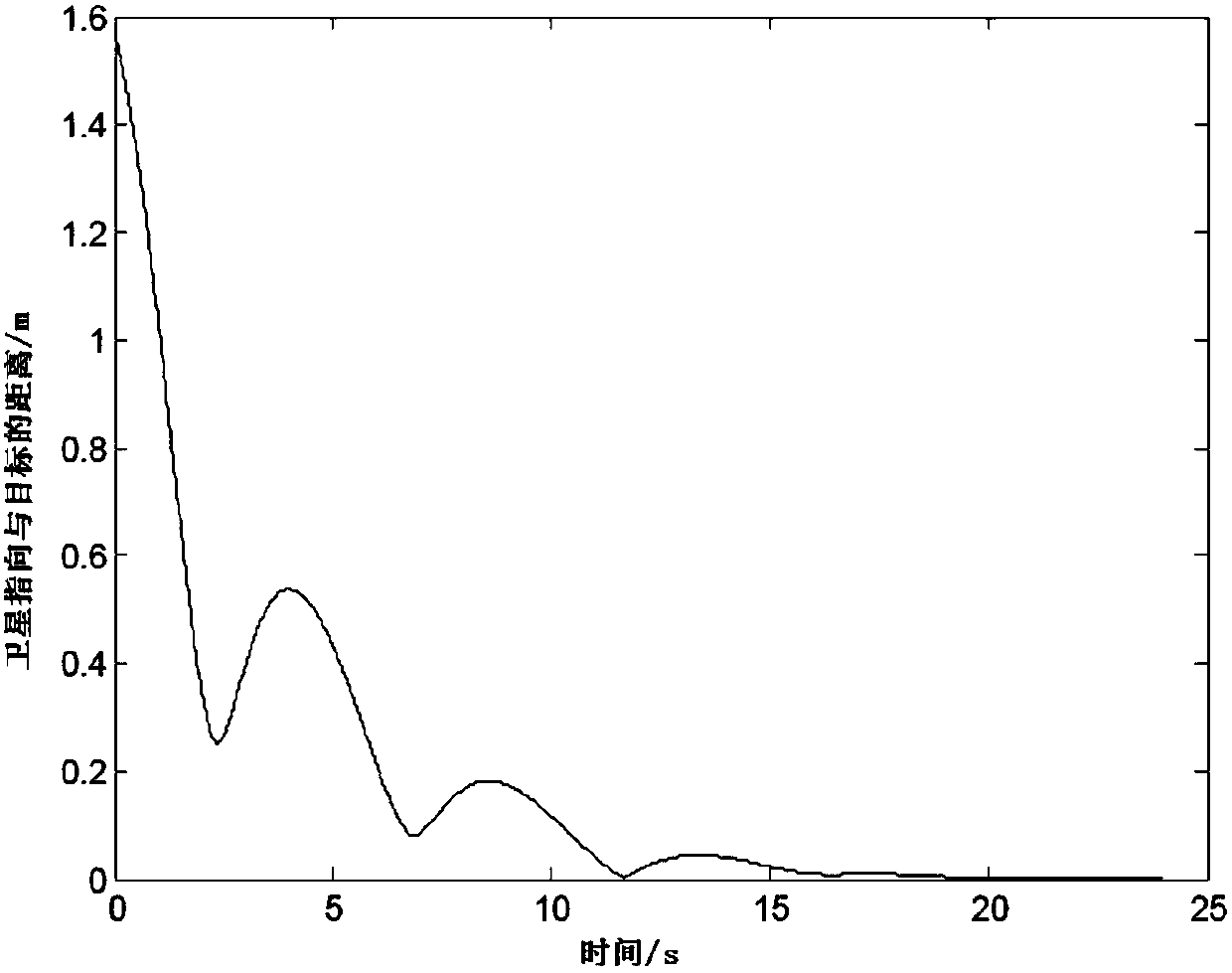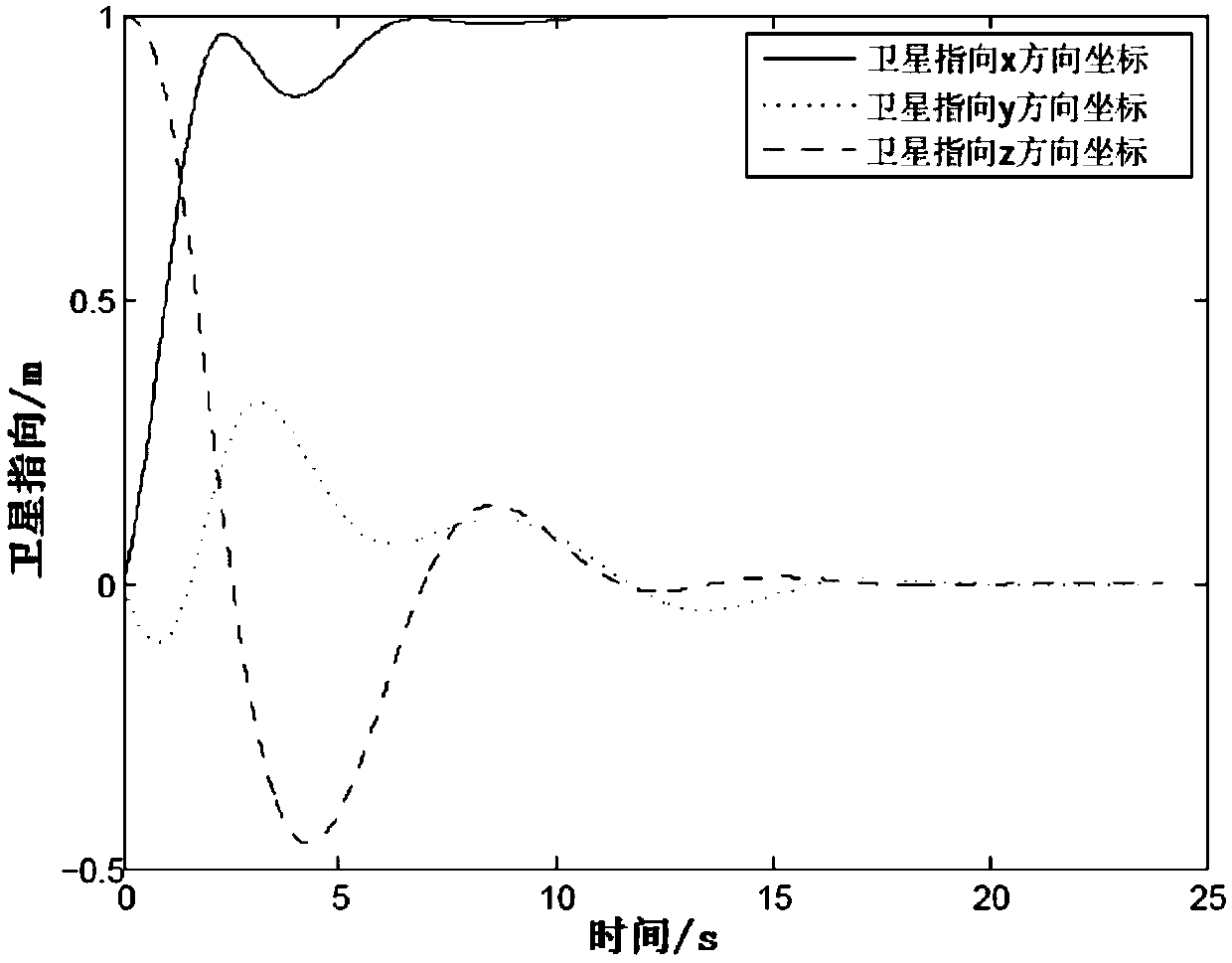Numerical Simulation Method of Satellite Attitude Based on Lie Group Spectrum Algorithm
A satellite attitude and numerical simulation technology, applied in the field of satellite attitude control, can solve the problems of poor stability of the algorithm, unwinding, waste of satellite control energy, etc., and achieve the effect of strong stability, avoiding unwinding, and concise expression
- Summary
- Abstract
- Description
- Claims
- Application Information
AI Technical Summary
Problems solved by technology
Method used
Image
Examples
Embodiment
[0094] The following takes the spin stabilization control of the satellite as an example to describe in detail, and the parameter values of the satellite simulation system are shown in Table 1 below.
[0095] The attitude dynamic model of the satellite is established based on the SO(3) group as follows:
[0096]
[0097] where e 1 =[1,0,0]T,e 2 =[0,1,0] T .
[0098] The control rate is taken as:
[0099]
[0100] in q=Re0 indicates the pointing of the satellite.
[0101] is the satellite's initial angular momentum M 0 An estimate of , follows the following rate of change:
[0102]
[0103] Among them, dist(q 1 ,q 2 ) represents the direction vector q 1 ,q 2 The angle between, that is, dist(q 1 ,q 2 ) = arccos(1 ,q 2 >), e 0 =[0,0,1] T .
[0104] Table 1 Parameter values of the satellite simulation system
[0105]
[0106]
[0107] For the simulation results above, see Figure 2-5 . figure 2 is the distance curve between the satellite ...
PUM
 Login to View More
Login to View More Abstract
Description
Claims
Application Information
 Login to View More
Login to View More - R&D
- Intellectual Property
- Life Sciences
- Materials
- Tech Scout
- Unparalleled Data Quality
- Higher Quality Content
- 60% Fewer Hallucinations
Browse by: Latest US Patents, China's latest patents, Technical Efficacy Thesaurus, Application Domain, Technology Topic, Popular Technical Reports.
© 2025 PatSnap. All rights reserved.Legal|Privacy policy|Modern Slavery Act Transparency Statement|Sitemap|About US| Contact US: help@patsnap.com



